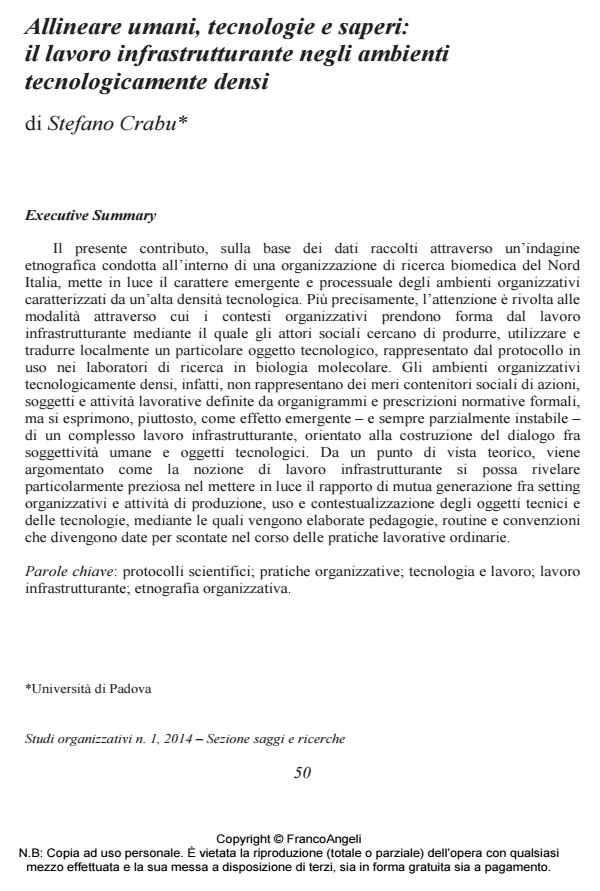Allineare umani, tecnologie e saperi: il lavoro infrastrutturante negli ambienti tecnologicamente densi
Journal title STUDI ORGANIZZATIVI
Author/s Stefano Crabu
Publishing Year 2014 Issue 2014/1
Language Italian Pages 23 P. 50-72 File size 248 KB
DOI 10.3280/SO2014-001003
DOI is like a bar code for intellectual property: to have more infomation
click here
Below, you can see the article first page
If you want to buy this article in PDF format, you can do it, following the instructions to buy download credits

FrancoAngeli is member of Publishers International Linking Association, Inc (PILA), a not-for-profit association which run the CrossRef service enabling links to and from online scholarly content.
This paper, based on the data collected during an organizational ethnography that was carried-out in a biomedical research center in Northern Italy, highlights the emerging dimensions of the technologically dense environment. Particular attention is paid to the ways in which organizational contexts are shaped by the infrastructuring work through which social actors seek to produce, use and locally translate a specific technological object, represented by the protocol used during biologists’ everyday practices. In this way, it is emphasized how the technologically dense environment should not be considered as containers of social actions, subjects and work activities defined by the formal organizational chart and regulatory requirements. They are, rather, an emerging outcome of a complex infrastructuring work oriented to shape a dialogue between human subjectivity and technological objects. From a theoretical point of view, it is argued that the notion of infrastructuring work may prove particularly valuable in shedding light on the mutual-generation relationship between organizational settings and activities of the production, use and translation of technologies.
Keywords: Scientific protocols; organizational practices; technologies in the workplace; infrastructuring work; organizational ethnography.
- Assessing the technological maturity of small enterprises through a collaborative approach Andrea Tomo, in STUDI ORGANIZZATIVI 2/2019 pp.147
DOI: 10.3280/SO2018-002007 - Real and apparent changes of organizational processes in the era of big data analytics Marcello Martinez, Primiano Di Nauta, Debora Sarno, in STUDI ORGANIZZATIVI 2/2018 pp.91
DOI: 10.3280/SO2017-002005
Stefano Crabu, Allineare umani, tecnologie e saperi: il lavoro infrastrutturante negli ambienti tecnologicamente densi in "STUDI ORGANIZZATIVI " 1/2014, pp 50-72, DOI: 10.3280/SO2014-001003